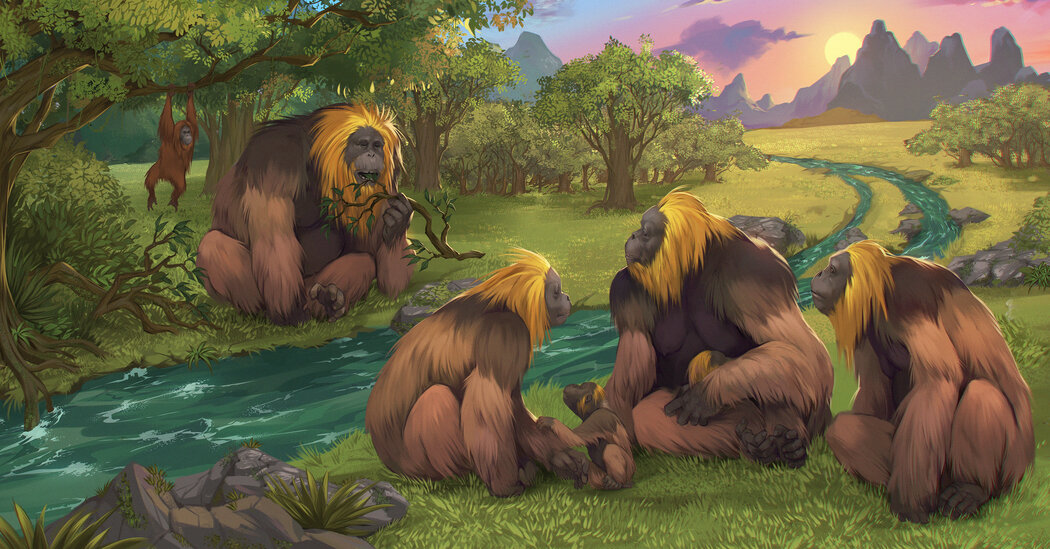Standing nearly as tall as a basketball hoop and weighing as much as a grizzly bear, Gigantopithecus blacki was the greatest ape to ever live. For more than a million years during the Pleistocene, Gigantopithecus roamed southern China. But by the time ancient humans reached the region, Gigantopithecus had vanished. To determine why these prodigious primates died out, a team of scientists recently analyzed clues preserved in Gigantopithecus teeth and cave sediment. Their findings, published Wednesday in the journal Nature, reveal that these nearly 10-foot-tall apes were most likely doomed…
Tag: Paleontology
Fossilized Fish Reveal Earliest Known Prequel of ‘Jaws’
Mention the ocean, and it’s hard not to think of jaws. The deep waters contain many tooth-lined mouths: the bear-trap maws of sharks and dolphins, the slack lips of shoaling and reef fish, the baleen-filter gape of enormous whales. Jawed fish eventually crawled out of the seas millions of years ago and gave rise to the jawboning vertebrates we are today. But when did such an evolutionary innovation arise? A pair of fossil beds discovered in Southern China suggest that the answer may lie tens of millions of years deeper…
‘Penis Worms’ May Have Been the First Hermits
Consider this evolutionary dilemma, faced by the aquatic and squishy: How do you survive in hostile, predator-filled oceans? Squid rely on speed or camouflage. Snails develop complex shells. Hermit crabs borrow those complex shells when other animals aren’t using them, trading them out for bigger models as they grow. This sheltering strategy was believed to have emerged 180 million years ago in the Jurassic Period, when hermit crabs’ ancestors appeared in oceans, said Martin Smith, a paleontologist at the University of Durham in England. But in a study published Monday…


